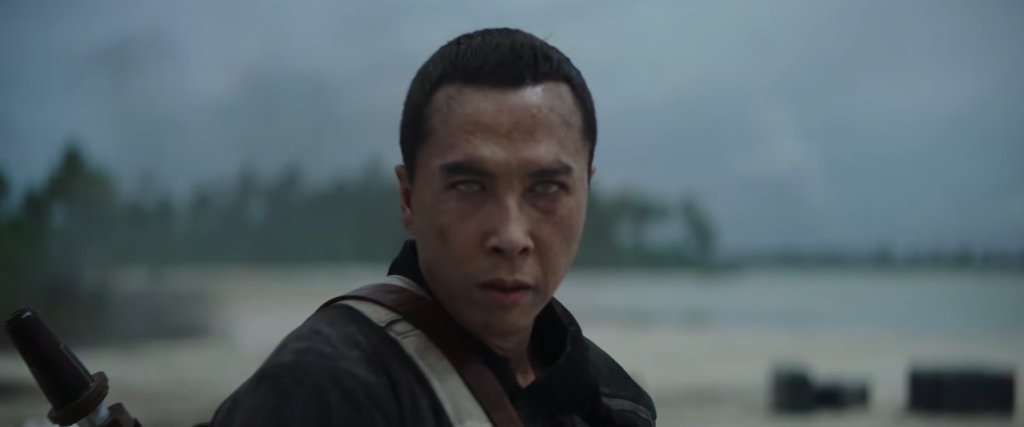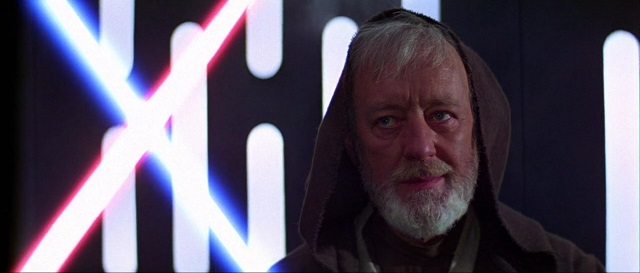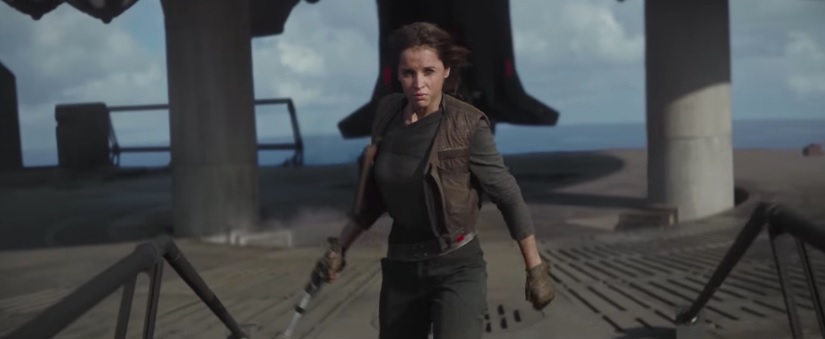
Baze was terrified. Chirrut was not. In the instant before he’d risen from the bunker, he’d questioned his own wisdom: How might he separate the will of the Force from his will, his ego, demanding action where action was unneeded? But there was no doubt in his heart now. The Force expressed itself through simplicity, and all it asked of him was to walk.
I am one with the Force and the Force is with me.
Is Chirrut Force-sensitive?
The more we learned about him prior to the release of Rogue One, the more people found themselves asking this question. Cassian Andor even comes close to asking the question himself within the movie, and the answer Baze Malbus gives him isn’t much more definitive than the one Rogue One offers viewers: he’s no Jedi.
That much is clear—Chirrut is not currently, nor was he ever, a Jedi Knight. He’s part of a new group called the Guardians of the Whills; devout followers of the Force, but not necessarily wielders of it. Baze certainly seems content with his giant-ass cannon. But that’s not usually what people mean when they ask, is he Force-sensitive? What they mean is, could he have been a Jedi? Is the Force warning him when a blaster bolt is about to come his way? With training, could he levitate things, perform mind tricks, and so on?
Personally, I doubt it. But to look at what Chirrut can do and ask “what if?” is to miss the point of Chirrut’s abilities entirely. Read More




